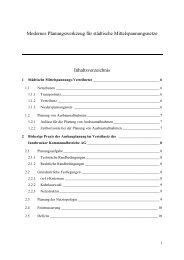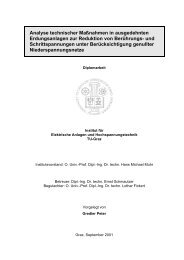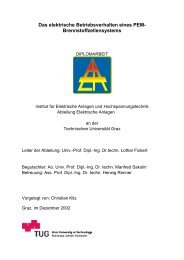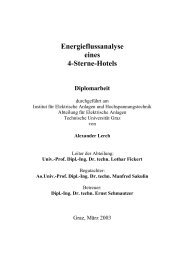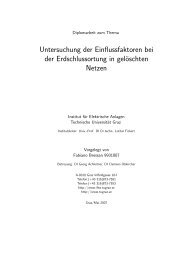Development of a wavelet-based algorithm to detect and determine ...
Development of a wavelet-based algorithm to detect and determine ...
Development of a wavelet-based algorithm to detect and determine ...
You also want an ePaper? Increase the reach of your titles
YUMPU automatically turns print PDFs into web optimized ePapers that Google loves.
6.2. BASIC IDEAS OF THE WAVELET TRANSFORM 37<br />
• The function is oscilla<strong>to</strong>ry.<br />
• Average value is zero<br />
The first characteristic makes a function "little" whereas the second one makes it "wavy"<br />
<strong>and</strong> hence a <strong>wavelet</strong>. These two characteristics must be simultaneously satisfied for a<br />
function <strong>to</strong> be a <strong>wavelet</strong>. A sinusoid never decays (i.e. wavy but not little) so that can<br />
not be a <strong>wavelet</strong>. A decay function (little but not wavy, e.g. Gauss function) also can<br />
not be a <strong>wavelet</strong>. However, the product <strong>of</strong> a wavy <strong>and</strong> a decay function can lead a<br />
<strong>wavelet</strong>. Figure 6.1 shows, as an example, how a <strong>wavelet</strong> is created: the product <strong>of</strong><br />
a sinusoid (6.1(a)) <strong>and</strong> a Gauss function (6.1(b)) makes a <strong>wavelet</strong> (6.1(c)) - the famous<br />
Morlet <strong>wavelet</strong> [8].<br />
Figure 6.1: Wavelet<br />
In mathematics, any function ψ(t) can be a <strong>wavelet</strong> if it satisfies the following condi-<br />
tion.




